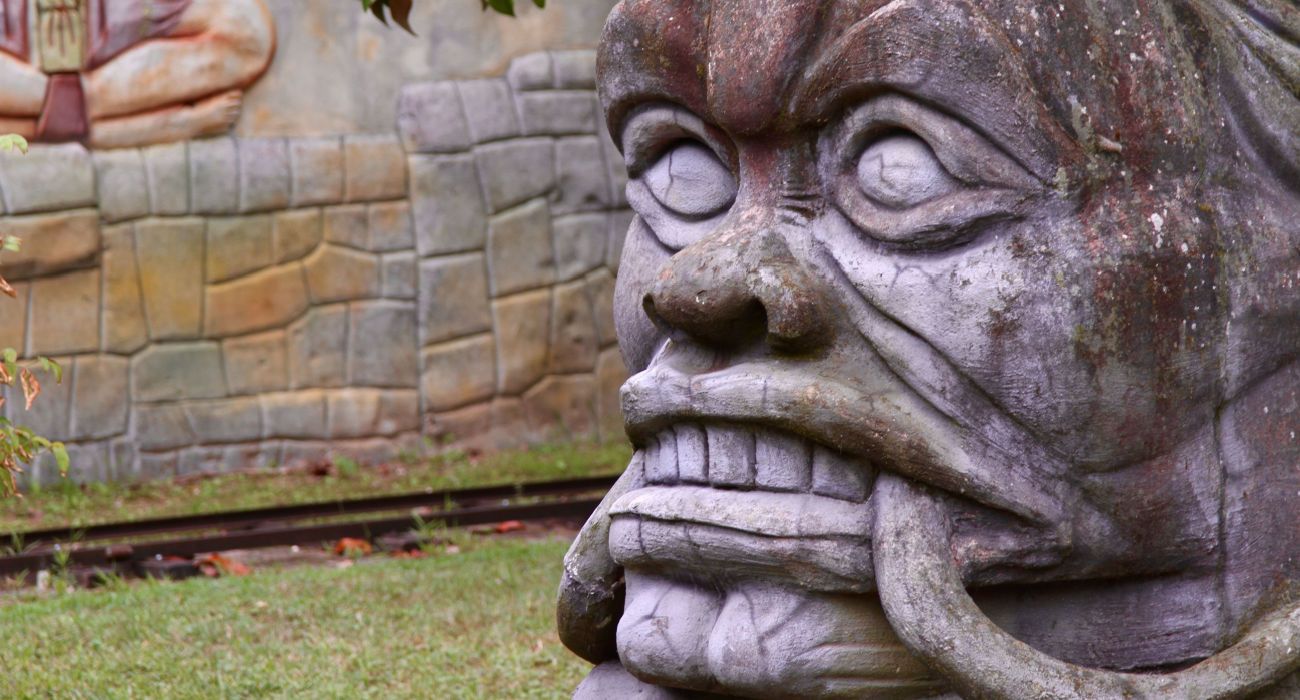Quick Links
The pre-Columbian cultures of the Americas have long captured the imagination. Today one of the most famous archeological attractions in the world is the Inca citadel of Machu Picchu, high in the Andes in Peru. The massive pyramids of the Sun and Moon continue to bewilder visitors to Mexico City about the ancient civilizations before the Aztecs. And the many pyramids and cities of the Maya continue to inspire generations - like Chechen Itza, that's counted as one of the New Seven Wonders of the World.
One of the bizarre attractions on the Hudson River was a collection of Maya ruins. During the 1800s, people moving along the Hudson had the chance to see these remarkable ruins thousands of miles from where they should have been. It would have been their only chance to have seen the artifacts, as going to the Yucatán Peninsula for a holiday was not the option it is today.
The Mid-19th Century Mayan Exhibit On The Hudson
A man called John C. Cruger owned an island on the Hudson, and he decided to build a Mayan exhibit on it. He partnered with John Lloyd Stevens, a travel writer, who traveled to Honduras to the ancient ruined Mayan city of Copán. He took casts of collapsed buildings and sent them to the United States. Many of the artifacts taken in these expeditions were lost in a massive fire in 1842.
Copán is an important Maya civilization archeological site in western Honduras close to the border with Guatemala. It was the flourishing capital city of a major Classic period Mayan kingdom from the 5th to 9th centuries AD. It was a city on the extreme southeast of the Mesoamerican cultural region and was almost surrounded by non-Maya peoples. Copán in Honduras is today one of the country's most important archeological sites and a great place to learn about the Maya.
John C. Cruger set up an exhibit of the casts and artifacts he received from the Mayan city of Copán (as well as from Palenque and Quiriqua). He used to show off his collection by taking his guests on midnight boat rides when the moonlight would glance off the exotic antiquities from another time and space.
For around 80 years, from around 1840 to 1920, paddling to Cruger island to see the Mayan ruins was one of the great local sources of entertainment.
Relocation Of The Mayan Exhibits To A Museum
When Cruger died, his family fell on hard financial times and eventually sold the land and sold the Mayan ruins and statues to the American Museum of Natural History in 1919.
According to Hudson Valley One, people can still see Cruger's old Mayan exhibits on display at the American Museum of Natural History, "Red Hook ruins" in the Hall of Mexico and Central America. The authentic 12th and 13th-century statuary from the Yucatán was sold to the NYC-based museum.
One of the notable pieces in the museum includes a turquoise-studded mask of a god and a human figure with two detachable headdresses from the facade of the House of the Governor at Uxmal. The exhibit also includes a doorjamb from Kabah in Mexico's Yucatan State. It depicts a subordinate kneeling before a decorated warlord.
Visiting Cruger Island & The Remains Of The Mayan Follies Today
The actual site that Cruger used to keep the ruins at is not really open to the public (but people can reach it by kayak). The site is the nesting grounds of some magnificent Bald Eagles, and in an effort to protect them, there is a fence built before the ruins. The remaining ruins and 19th-century towers are still on the island but are hidden away behind the fence.
Cruger's folly of mostly fake ruins remains on the island (the authentic ruins have been removed). There are the dilapidated remains of a 19th-century structure of piled stones and the fragments of what was once a proxy for a Mayan temple. They stand as a testimony to the Romanization of aspects of history in the 19th century.
- Status: Closed To The Public To Protect Nesting Bald Eagles
Cruger Island is connected by a causeway road to the Bard College campus and is more of a peninsula these days. A raised Amtrak railbed also straddles the center of the island.
Naturally, the best place to see Mayan ruins is in the homelands of the Maya today, found in five countries in the Yucatán Peninsula area.

